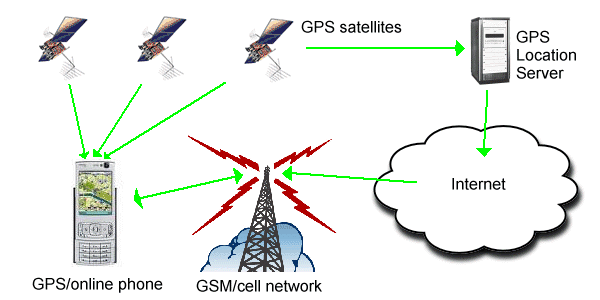|
Mainland High School
Suitable for a Disaster: ISTF 08-1835 |
|||||||||
|
Home
Introduction Contest Components One Two  Product Product
Three Fabrics History of Fabrics Smart Fabric Projects Sensors Nano Sensors Power Production Communication Cell Phones 3G Phones Data Transfer Helikites Interoperability Microwaves Relief Agencies Telecommunication Project Assessment Team |
3G
The iPhone, Blackberry, and Voyager, are all examples of smart phones that operate
on a
Third Generation (3G) network.
But what really makes a phone smart? A phone is considered "smart" when it can perform most of the functions of your average computer, such as: internet access, document viewing, sending and receiving email, and more, as well as being able to maintain all the uses of a normal cell phone. Smart phones run off of the 3G-network which the The International Telecommunications Union (IMT-2000) defined as being able "to facilitate growth, increase bandwidth, and support more diverse applications." 3G-phones come with the necessary hardware but their full functionality cannot be realized without the appropriate software; for example, Windows Mobile.
Thanks to technologies such as 3G, many, but not all, smart phones now have Assisted Global Postitioning Systems incorporated into their operations. GPS "provides reliable positioning, navigation, and timing services to civilian users on a continuous worldwide basis." This would be a very beneficial feature to have incorporated into our product's suits. For example, a GPS could provide in real-time the location of any first responder. Smart phones currently use two separate technologies (one for internet, and the other for everyday phone use) to function as smart devices. What some companies, such as Linksys and ZyXel, are doing is combining the two technologies into one. This is being accomplished with devices such as the Wireless-G and the WiMAX respectively. These two products "allow you to make voice calls using a broadband Internet connection instead of a regular ... phone line" (Voice Over Internet Protocal or VoIP). Phones that have this combined technology are commonly refered to as Wi-Fi phones. Once most smart phones adopt this new technology we will have moved into the 4th Generation (4G). As of December 1st 2008 the internet company Clearwire and the cell phone service Sprint/Nextel decided to start a 4G mobile internet company which has already been a 3.2 billion dollar transaction. Nortel, in China, completed the world's first 4G broadband demonstration on January 23, 2009. They are operating on a CDMA200-based network, the same type of 3G network used in the United States. All About Symbian - Revisiting My 3G iPhone Predictions http://www.allaboutsymbian.com/features/item/The_future_of_GPS-equipped_smartphones.php BlackBerry Sync - BlackBerry 8820 launches on Rogers http://blackberrysync.com/2008/06/blackberry-8820-launches-on-rogers/ Broadband Wireless Exchange Magazine - Nortel 4G Demonstration http://www.bbwexchange.com/pubs/2009/02/13/page1369-5483012.asp Dailywireless - WiMAX http://www.dailywireless.org/2007/02/20/wimax-80216m-100-mbps/ Federal Communications Commission - Voice over Internet Protocol http://www.fcc.gov/voip/ Global Positioning System http://www.gps.gov/ How Stuff Works - WiFi Phones http://electronics.howstuffworks.com/wifi-phone.htm International Communication Union - About ITU http://www.itu.int/net/about/index.aspx International Communication Union - IMT-2000 http://www.itu.int/home/imt.html Linksys by Cisco - Wireless Router http://www-id.linksys.com/servlet/Satellite? MP4 Converter - The Apple iPhone unveiled http://www.mp4converter.net/news/the-apple-iphone-unveiled.html Research Creations - Smartphones http://www.researchcreations.com/smartphones.asp SearchTelecom - What is 3G? http://searchtelecom.techtarget.com/sDefinition/0,,sid103_gci214486,00.html Seeking Alpha - Revisiting My 3G iPhone Predictions http://seekingalpha.com/article/84857-revisiting-my-3g-iphone-predictions Skatter Tech - Verizon Announces 4 New Phones http://skattertech.com/2007/10/verizon-announces-4-new-phones/ Window Mobile http://www.microsoft.com/windowsmobile/en-us/meet/default.mspx XOHM - Launch 4G http://www.xohm.com/en_US/about/news-events/press-release/press-release-20081201.html ZyXEL - WiMAX MIMO VoIP Router http://us.zyxel.com/Products/details.aspx? 3G Phones http://www.three-g.net/3g_standards.html |





